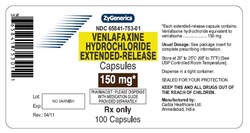Pharmacology definition - Heterocyclic Antidepressant

Heterocyclic Antidepressant
Heterocyclic antidepressant is useful in treating any generalized form of anxiety disorder or depression.
There are a few forms of heterocyclic antidepressant such as mirtazapine, venlafaxine and nefazodone.
Mirtazapine is a form of heterocyclic antidepressant which may lead to gain in weight. The action may include increasing the release of serotonin and norepinephrine by inhibiting the activation of the 5HT2 receptors and alpha 2 adrenergic receptors.
Venlafaxine may lead to high in blood pressure and increase in heart rate. Venlafaxine and nefazodone may potentiating the effect of both norepinephrine and serotonin on the receptors of the postsynaptic by blocking the reuptake of serotonin and norepinephrine from the synaptic cleft.
Generally the common side effect of heterocyclic antidepressant is sedation .
Heterocyclic antidepressant is useful in treating any generalized form of anxiety disorder or depression.
There are a few forms of heterocyclic antidepressant such as mirtazapine, venlafaxine and nefazodone.
Mirtazapine is a form of heterocyclic antidepressant which may lead to gain in weight. The action may include increasing the release of serotonin and norepinephrine by inhibiting the activation of the 5HT2 receptors and alpha 2 adrenergic receptors.
Venlafaxine may lead to high in blood pressure and increase in heart rate. Venlafaxine and nefazodone may potentiating the effect of both norepinephrine and serotonin on the receptors of the postsynaptic by blocking the reuptake of serotonin and norepinephrine from the synaptic cleft.
Generally the common side effect of heterocyclic antidepressant is sedation .
